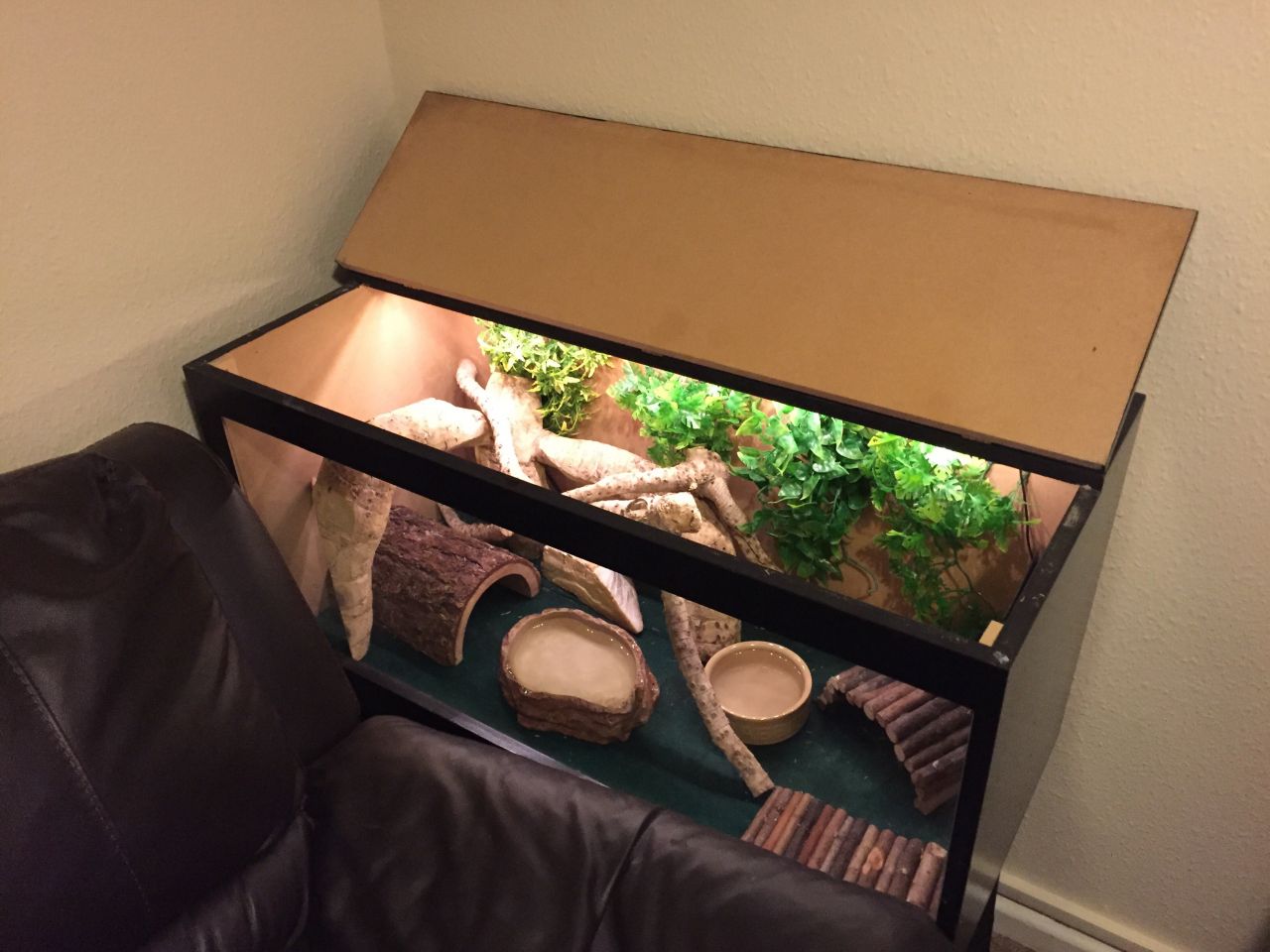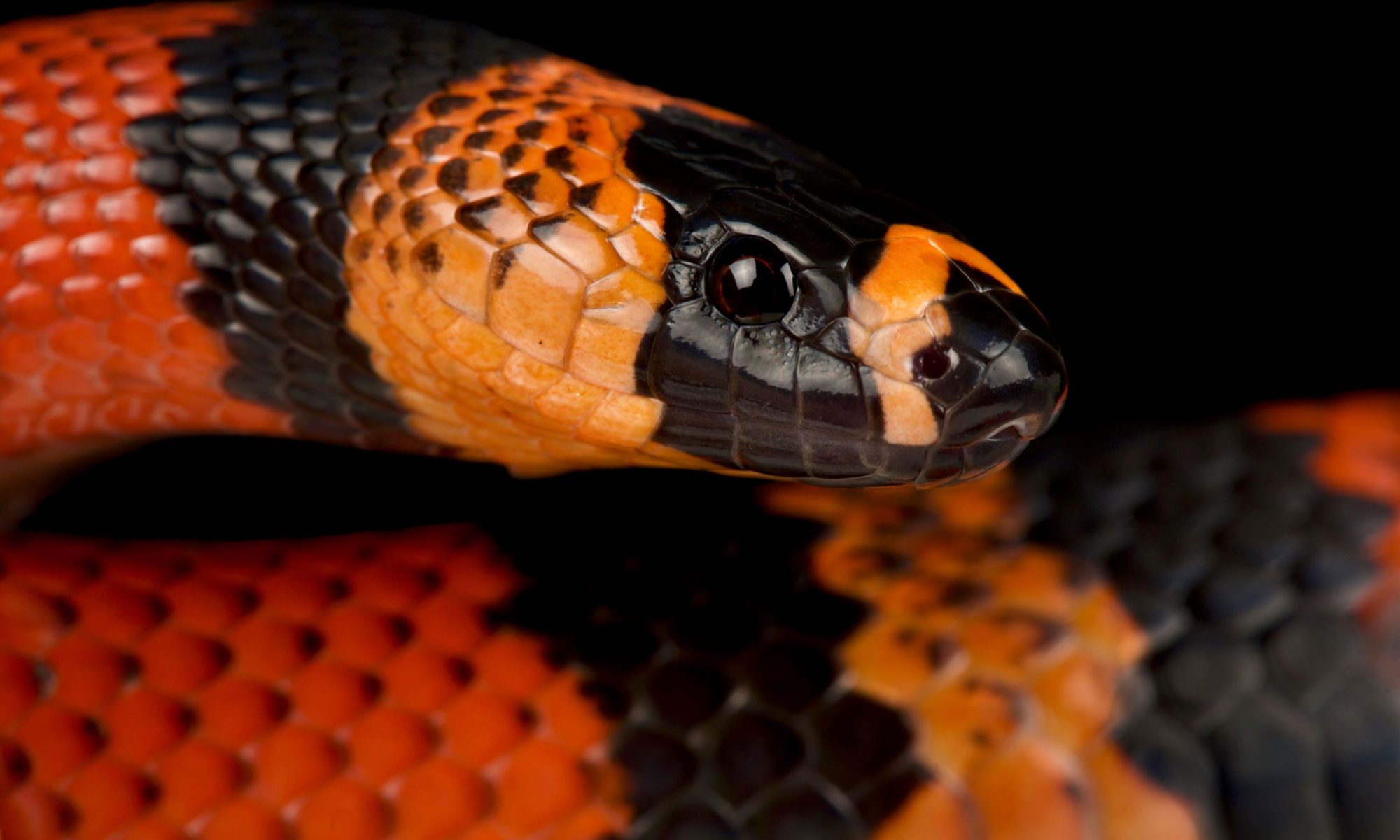

If you need more, moisten the substrate by mixing water into it as needed. Misting your snake’s enclosure with a sprayer first thing in the morning and again at night will help create the right humidity levels. Always having a humid retreat is essential. There should also be a humid hide for your snake, lined with moistened sphagnum moss or substrate. Milksnakes need an average humidity of 40-60%, as measured by a digital probe hygrometer placed in the middle of the enclosure. If the heat lamp is not enough to get the warm hide to an appropriate temperature, use a heat mat connected to a thermostat to control the warm hide temperature.

Do not use ceramic heat emitters (CHEs), red bulbs, or blue bulbs, as these are not as effective. Provide heat for your milksnake by imitating the sun with two halogen heat lamps placed close together one side of the enclosure, positioned over a sturdy basking branch or warm hide. Surface temperatures can be measured with an infrared thermometer, but air temperatures should be measured with a digital probe thermometer. On the other side of the enclosure, the temperature should be between 70-80☏. Milksnakes should have a basking surface temperature between 85-90☏. Like other reptiles, milksnakes are ectotherms, which means that they need a temperature gradient in their enclosure to help them regulate their metabolism and stay healthy. What basking temperatures do milksnakes need? Also make sure that the fixture your UVB bulb is in does not have a clear plastic bulb cover. UVB is blocked by glass and plastic, so you can’t give your snake UVB by placing its terrarium in front of an open window. The UVB bulb should be housed in a reflective fixture by Arcadia or Vivarium Electronics and placed close to the heat lamp, about 9-11” above the basking area if over mesh, and 12-14” above the basking area if not.

Milksnakes do best with low-strength UVB as part of their enclosure. UVB gives milksnakes all of the vitamin D that their bodies need, stimulates better appetite and activity, and generally allows them to be healthier than they would be without. They can survive without it, but it’s still best practice to provide UVB lighting for optimal health and wellbeing. Furthermore, considering that milksnakes are known ophiophages (snake-eaters), cannibalism is a very real danger. This is just the minimum, so using larger dimensions is beneficial and will happily be used!Ĭohabitation (keeping multiple milksnakes in one enclosure) is not recommended, as milksnakes are not a social species, and keeping them together is likely to cause stress. The minimum acceptable enclosure size for a pet milksnake depends on how large its species/subspecies is capable of growing: Never capture wild milksnakes to keep! How much space do milksnakes need? Milksnakes are very common wild animals in the US, but if you are considering a pet milksnake, please consider adopting one from a rescue or your local classifieds. This care sheet should be used only as a general guide, and we strongly recommend doing research on your specific species/subspecies of milksnake for best results. Milksnakes’ care requirements are generally fairly similar from species to species, however there are essential differences that should be noted. With good care, they are capable of living 20 years or more.

This also makes them a good option for first-time reptile keepers. Milksnakes are among the most commonly-kept pet snakes in the US, due to their hardiness and manageable size. Exceptions include the black milksnake and morphs. Appearance varies by species/subspecies, but milksnakes typically have some kind of banded pattern in a combination of red/orange + black + yellow/cream. Milksnakes can be as small as just 14” or as large as 72”, although most are in the range of 3.5’ long or less. Milksnakes have conquered a wide variety of habitats, from arid habitats to grassland to tropical forest. ) are a group of small- to medium-sized, terrestrial snakes widespread throughout North America, Central America, and South America as far south as Ecuador.


 0 kommentar(er)
0 kommentar(er)
